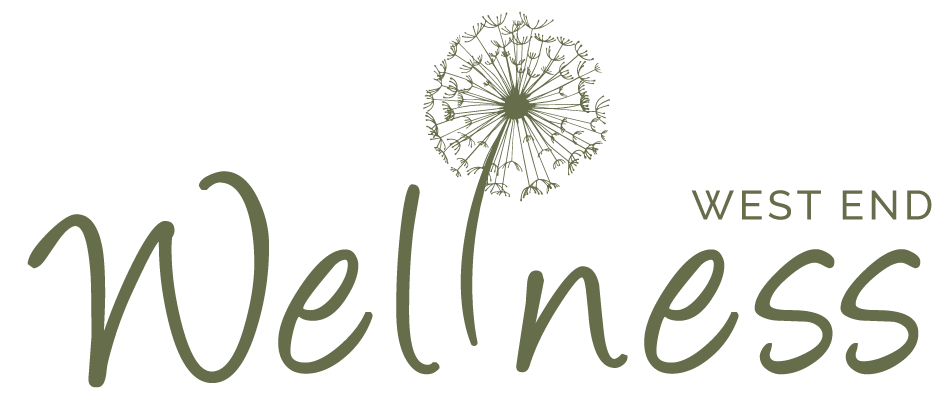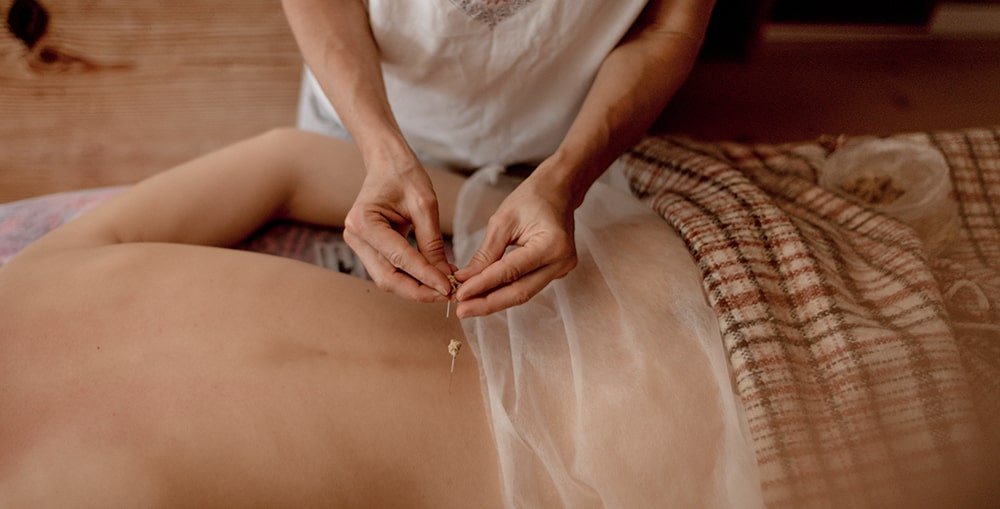What is Japanese-Style Acupuncture? A Gentle Path to Healing
Table of Contents Show
Quick Summary
Discover Japanese-style acupuncture, a gentle yet powerful approach to healing that uses ultra-fine needles and precise techniques. This style emphasizes patient comfort through refined methods, including specialized insertion techniques and careful diagnosis through touch.
Learn about its rich history, various treatment styles including the Kiiko Matsumoto approach, and how it can help with pain management, stress, digestive issues, and overall wellness. Perfect for both newcomers to acupuncture and those seeking a gentler alternative to traditional treatments.
TL;DR – What Is Japanese-Style Acupuncture?
Gentle Approach: Uses ultra-fine needles (1/4 the thickness of Chinese needles) with specialized insertion techniques that prioritize patient comfort - many patients barely notice the needles.
Diagnostic Precision: Emphasizes touch diagnosis and careful palpation to identify exact treatment points, allowing for effective treatment with minimal stimulation.
Historical Evolution: Originated from Chinese techniques but evolved uniquely in Japan since 414 CE, with significant developments like Waichi Sugiyama's insertion tube method in the 17th century.
Various Styles: Includes Meridian Therapy, Shonishin (for children), Traditional Moxibustion, and Kiiko Matsumoto Style (KMS), often integrated for personalized treatment.
Wide Applications: Effectively treats pain management, stress, digestive issues, and women's health concerns and supports chronic conditions with minimal side effects.
Here at West End Wellness, we're excited to share something special with you—Japanese-style acupuncture, a remarkably gentle approach to healing that sets itself apart from other acupuncture traditions.
While Traditional Chinese Medicine (TCM) and other acupuncture styles are well-known and effective, Japanese acupuncture stands out for its incredible precision and refined techniques. Our patients often tell us they can hardly believe they're receiving acupuncture at all - the needles are so fine and the technique so gentle that many people read, relax, or even drift off to sleep during their treatment.
In this article, you'll learn:
The unique features that make Japanese acupuncture distinctly gentle
What you can expect during a treatment at our clinic
The science behind why these subtle techniques work so well
Who can benefit most from this approach
How to know if Japanese-style acupuncture is right for you
We believe that understanding your treatment options helps you make the best choices for your health.
Whether you're dealing with chronic pain or stress or looking to maintain your wellness, we'll show you why many of our patients choose Japanese-style acupuncture for its gentle yet effective approach.
The Gentle Touch: Understanding Japanese Acupuncture
Japanese acupuncture stands out in the world of traditional medicine for its remarkably gentle approach. Our treatment philosophy centers on achieving powerful results through subtle, precise techniques that prioritize your comfort.
Unlike other styles, we use ultra-fine needles - about a quarter of the thickness of traditional Chinese needles - and specialized insertion methods that most patients barely notice.
What truly sets Japanese acupuncture apart is our emphasis on touch diagnosis and precise point location. Every treatment begins with careful palpation of specific areas, allowing us to identify exactly where treatment is needed.
This attention to detail means we can be more effective while using minimal stimulation - perfect for those who might be nervous about needles or sensitive to treatment.
Acupuncture: A Time-Tested Tradition Meets Modern Practice
The story of Japanese acupuncture is fascinating. According to research published in Evidence-based Complementary and Alternative Medicine, acupuncture first arrived in Japan from Korea around 414 CE, with the earliest medical texts arriving from China in 562 CE.
These early texts included detailed meridian charts and acupoint locations that would form the foundation of Japanese practice (Kobayashi et al., 2010).
What's particularly interesting is how Japanese practitioners adapted and refined these techniques over centuries. A significant breakthrough came in the 17th century when a blind acupuncturist, Waichi Sugiyama, invented the insertion tube method.
This technique revolutionized gentle needle placement and is still used worldwide today.
The Japanese approach evolved to emphasize:
Refined needle techniques using finer needles
Careful palpation for diagnosis
Gentle, shallow insertions
Integration with moxibustion therapy
Focus on patient comfort and response
Today's practice beautifully combines this historical wisdom with modern understanding. Scientific research continues to validate what practitioners have known for generations - that these gentle techniques can trigger powerful healing responses in your body, from releasing natural pain-relieving chemicals to reducing inflammation and promoting relaxation.
This evolution of Japanese acupuncture from its Chinese roots into its distinctive style reflects Japan's cultural emphasis on refinement and precision.
Each generation of practitioners has contributed to making treatments more comfortable and effective while maintaining the core principles of traditional East Asian medicine.
Different Styles Within Japanese Acupuncture
The world of Japanese acupuncture offers several distinct approaches, each with its unique characteristics and benefits. Understanding these different styles can help you appreciate the depth and versatility of Japanese acupuncture practice.
-
This foundational style focuses on balancing the body's energy pathways (meridians) using very gentle techniques.
Practitioners use careful palpation and subtle needling to restore harmony to these channels, often targeting specific points that help regulate the body's natural healing abilities. -
Developed specifically for children, Shonishin is a specialized technique that doesn't rely on needle insertion. Instead, practitioners use gentle tapping, rubbing, or pressing on specific points. While created for pediatric care, many adults who are sensitive to needles also find this approach beneficial.
-
Moxibustion is a warming therapy that often complements acupuncture treatments. This technique uses the herb mugwort to warm specific points on the body, promoting circulation and supporting the healing process. Many Japanese practitioners consider moxibustion an essential part of their treatment approach.
-
Here at West End Wellness, we're particularly excited to offer treatments influenced by the Kiiko Matsumoto Style. This modern approach combines traditional Japanese techniques with contemporary medical insights, creating a highly effective and systematic treatment method. If you're interested in learning more about this innovative style, check out our detailed article on The Growing Popularity of Kiiko Matsumoto Acupuncture.
Integrating Different Approaches
While these styles each have unique characteristics, many modern practitioners integrate elements from different approaches to provide the most effective treatment for each individual patient. The key is finding the best combination for your specific needs and comfort level.
Japanese acupuncture is special because these various styles share the same core principles of gentleness, precision, and careful attention to patient comfort.
Whether you're receiving traditional meridian therapy or a more modern approach, you can expect the same level of careful, thoughtful treatment that Japanese acupuncture is known for.
Who Can Benefit? Common Treatment
Many people turn to massage therapy when they're experiencing pain or discomfort, and while massage is excellent for muscular tension, Japanese acupuncture offers a different kind of healing.
Think of it as working with your body's own internal healing system rather than just addressing surface-level symptoms. Where massage works directly on muscles and tissues, Japanese acupuncture activates your body's natural ability to heal itself from within.
You might be surprised by the wide range of conditions that respond well to Japanese acupuncture. Our patients often tell us they came in for one specific issue, only to find other aspects of their health improving, too.
This is because Japanese acupuncture takes a holistic approach, viewing your body as an interconnected system rather than isolated symptoms.
-
Living with pain can affect every aspect of your life. Whether it's:
Persistent back or neck pain that makes work difficult
Sports injuries that won't fully heal
Joint pain that limits your mobility
Headaches or migraines that impact your daily life
Arthritis discomfort that affects your activities
Japanese acupuncture's gentle approach can help reduce pain and inflammation while promoting natural healing, often providing relief where other treatments have fallen short.
-
In today's fast-paced world, stress affects nearly everyone. You might recognize these common stress-related issues:
Anxiety that interferes with daily life
Sleep problems that leave you exhausted
Tension headaches that won't go away
Digestive issues triggered by stress
Mood fluctuations that impact your relationships
Our patients often report feeling deeply relaxed during and after treatments, with many experiencing improved sleep and reduced anxiety levels even after their first session.
-
Your digestive system affects everything from your energy levels to your immune system. Japanese acupuncture can help with:
IBS and digestive discomfort
Bloating and irregular digestion
Food sensitivities
Acid reflux
Nausea and appetite issues
-
Many women find Japanese acupuncture particularly helpful for:
Menstrual irregularities and discomfort
Fertility support
Pregnancy-related discomfort
Menopausal symptoms
Hormonal balance
-
You don't need to wait until something goes wrong to benefit from Japanese acupuncture. Many of our patients use regular treatments to:
Maintain overall wellness
Boost immune system function
Manage stress levels
Improve sleep quality
Increase energy and vitality
-
For those living with chronic conditions, Japanese acupuncture can be a valuable part of your care plan, helping with:
Autoimmune conditions
Fibromyalgia
Chronic fatigue
Allergies and asthma
Long-term pain management
The gentle nature of Japanese acupuncture makes it an excellent choice for sensitive individuals or those who haven't found relief through other treatments. It can be safely combined with most other forms of medical care, making it a versatile addition to your health maintenance routine.
Remember, everyone's experience with acupuncture is unique. What makes Japanese acupuncture particularly special is how it can be tailored to your individual needs and sensitivity levels, providing effective treatment without overwhelming your system.
Experience a personalized, results-driven acupuncture approach designed to target your unique health concerns effectively.
Frequently Asked Questions
Is Japanese acupuncture better than Chinese acupuncture?
Neither style is "better" - they're just different approaches to healing. Japanese acupuncture uses finer needles and more gentle techniques, making it ideal for sensitive patients or those new to acupuncture. Chinese acupuncture often uses slightly stronger stimulation, which some patients prefer. Both styles are effective, and the best choice depends on your personal comfort level and health needs.
What are the side effects of Japanese acupuncture?
Japanese acupuncture is known for having minimal side effects due to its gentle approach. Some patients might experience:
Slight bruising at needle sites (rare)
Mild tiredness after treatment
Brief lightheadedness
Temporary symptom relief followed by return of condition
Most patients experience no side effects at all, and many report feeling relaxed and energized after treatment.
What is Japanese moxibustion?
Moxibustion is a warming therapy that uses dried mugwort (moxa) to heat specific points on the body. In Japanese practice, it's often used alongside acupuncture to:
Improve circulation
Reduce pain and stiffness
Support overall healing
Warm and strengthen the body
The Japanese approach to moxibustion is particularly refined, using small amounts of moxa and precise application methods for maximum comfort and effectiveness.
If you have any further doubts or questions regarding this subject or another treatment, contact one of our experienced Acupuncturists or Registered Massage Therapists here at West End Wellness Clinic. You can either give us a call or make an appointment.
Disclaimer: Please remember this article is for informational purposes only and should not replace professional medical advice. Please consult a healthcare provider or someone with the correct qualifications before starting any new exercise or treatment program.




